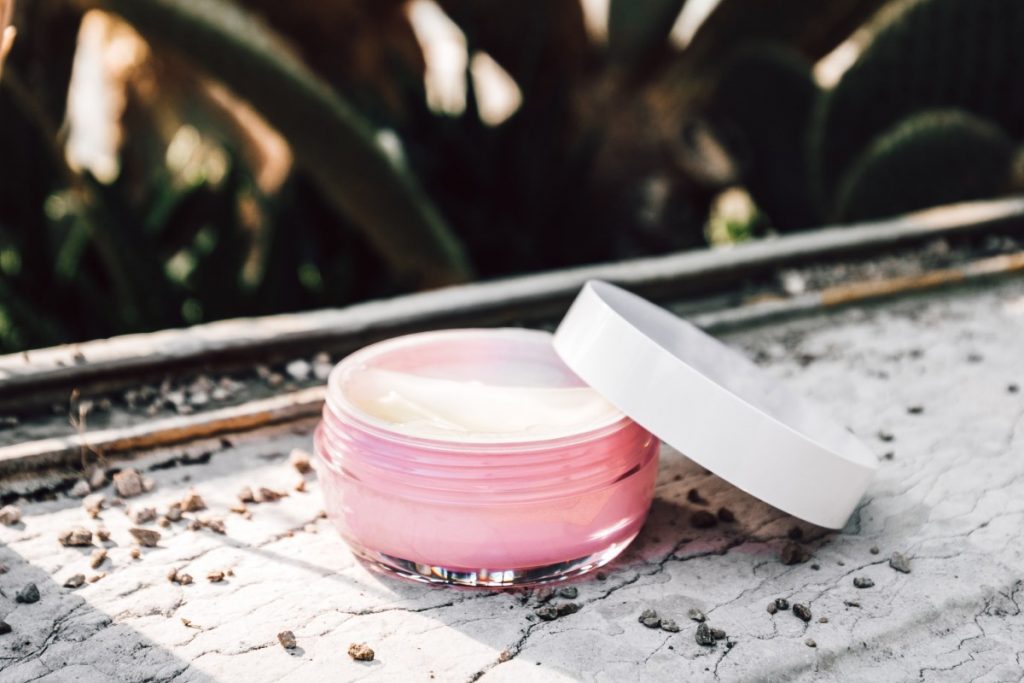
Hyaluronic Acid vs. Glycerin: Which One Is Best for You?
Glycerin and hyaluronic acid are some of the most coveted ingredients in beauty products, being praised by those in the know for their game-changing abilities to hydrate the skin. In fact, the two are often regarded as the “holy grail of humectants” due to their water retention powers. And since we all strive for a moisturized and plumped complexion, glycerin and hyaluronic acid are a perfect treat for everyone — no matter the skin type — becoming almost as practical as sunscreen.
While you might be familiar with these humectants, there still remains so much more to learn about them. Like, what’s the difference between hyaluronic acid and glycerin, and which one should you use? Or, can you use them together, and if so, which one goes first? If you’ve been pondering these questions you came to the right place. Read on to find out all you should know about these famous humectants.
What is hyaluronic acid?
Hyaluronic acid is a naturally occurring component in the body’s connective tissues, playing a crucial role in skin moisture. As a humectant, it acts like a sponge to draw moisture from the environment to the top layers of the skin, providing long-lasting hydration. Hyaluronic acid molecules are potent at hydrating the skin and keeping it moist because they can attract up to 1,000 times their weight in water.
For the record, there are two major types of hyaluronic acid in terms of molecular size often used in skincare. They include high and low-molecular-weight hyaluronic acids.
High molecular weight: Due to the large molecules, it doesn’t penetrate the skin easily, acting more on the surface. That means the results are seen almost instantly, but they don’t last long.
Low molecular weight: Known as sodium hyaluronate. It’s smaller than the high molecular weight, making it easier to penetrate the epidermis. It helps ensure that water is accurately stored in the skin’s connective tissues. This makes it not only great for firming but also for reducing wrinkles and balancing oil production. Additionally, moisture is stored in the skin for a long time when low molecular weight hyaluronic acid is used. As a result, it has longer-lasting effects.
What is glycerin?
Glycerin is a natural compound made from animal or vegetable fats. In skincare, it works by hydrating the outermost layer of the skin, improving barrier function, and providing protection against irritants.
Glycerin vs. hyaluronic acid
Glycerin and hyaluronic acid are pretty similar as they are both effective humectants. However, they have their own unique perks that make them different from each other. So it’s good to understand the differences and similarities between hyaluronic acid and glycerin, particularly if you’re looking to add them to your skincare routine.
Similarities between glycerin and hyaluronic acid
- As they are moisturizing agents that draw moisture from their surroundings, glycerin and hyaluronic acid are both forms of humectants.
- Both are often used in anti-aging products as they plump wrinkles look, relieve dryness, and make skin appear plump.
- According to studies, these components carry anti-irritant and anti-inflammatory effects. And this makes them excellent choices for improving skin conditions like irritations and breakouts.
- Both glycerin and hyaluronic acid stabilize collagen and help speed up healing processes in the skin. This means they both enhance skin firmness and elasticity.
- Studies also show that both components are loaded with antioxidants that can reduce inflammation and redness of the skin.
Differences between glycerin and hyaluronic acid
- Glycerin has a smaller molecular size than hyaluronic acid, thus it’s more easily absorbed by the skin. However, unlike higher molecular weight hyaluronic acid, glycerin cannot sit on top of the skin and form a hydrating layer to prevent water loss.
- Glycerin is sticky and leaves a tacky residue on the skin if used excessively. On the other hand, hyaluronic acid is more lightweight and doesn’t leave sticky residues.
- Glycerin can be found in concentrations of up to 78.5 percent, while hyaluronic acid can be found in concentrations of up to 5%.
- Glycerin is not a naturally occurring compound in the human body. On the other hand, hyaluronic acid is a naturally occurring compound found in the body’s connective tissues.
- Glycerin can be irritating to the body if applied excessively, while hyaluronic acid is usually gentle on the skin and non-irritating.
Can you use hyaluronic acid and glycerin together?
If you find it hard to choose between both options, the good news is that you can use hyaluronic acid and glycerin together to boost their benefits. Both hyaluronic acid and glycerin have similar functions in skincare, and using them together in your routine promises to enhance hydration, diminish wrinkles look and address dullness. Starting your skincare routine with hyaluronic acid is ideal because glycerin has some emollient characteristics. A hyaluronic acid serum can hydrate the skin and draw in moisture, and you can layer a glycerin-based moisturizer on top to complete the process and trap hydration.
Final words
Ultimately, regularly applying glycerin and hyaluronic acid lessens dryness and minimizes wrinkles and fine lines as they support hydration and complexion balancing. So whatever your skin type, combining glycerin and hyaluronic acid in your everyday skincare routine helps combat dryness, lessen wrinkles and give you supple, soft, and hydrated skin.